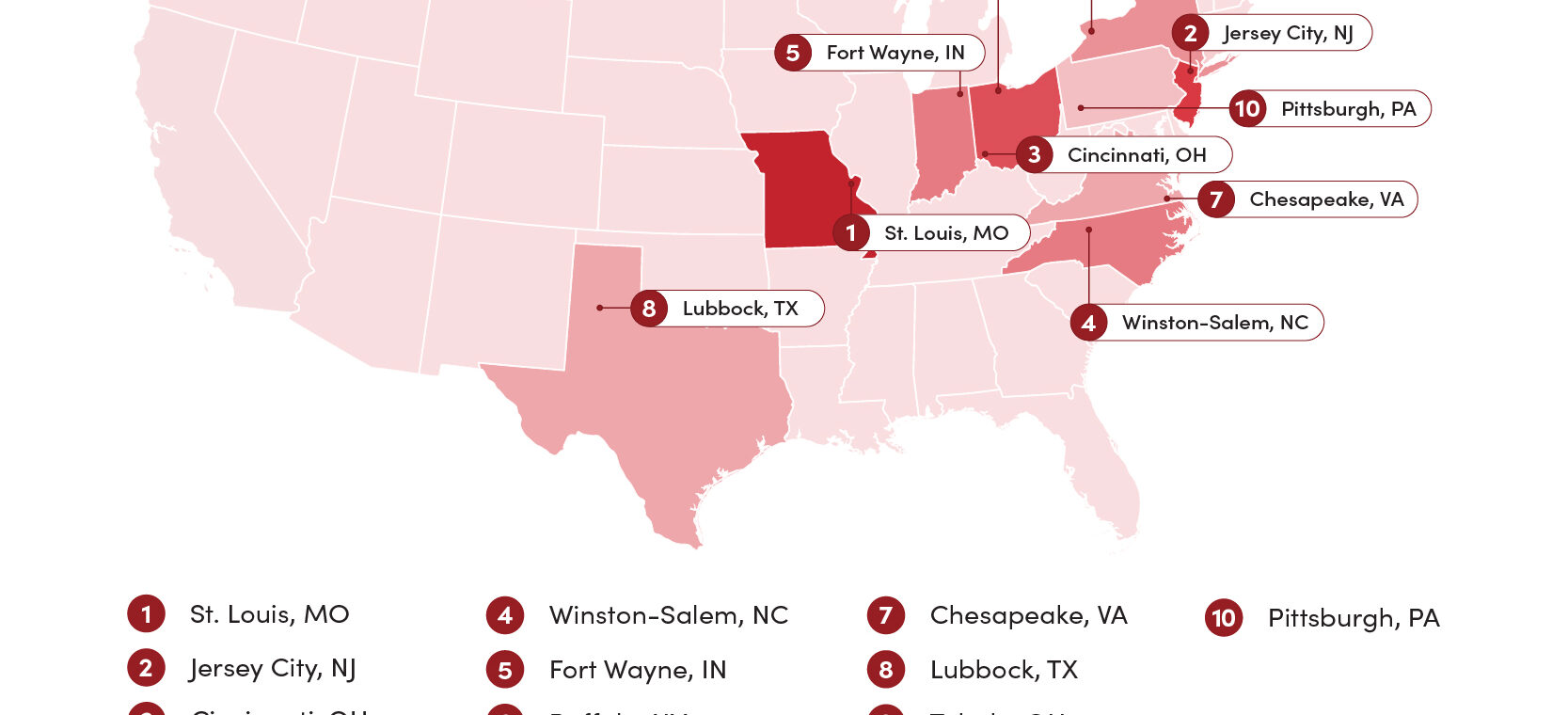
The 2024 Picky Eating Report
America: land of the brave … except when it comes to eating.
While some of us might pride ourselves on our ability to embrace culinary diversity, not everyone has an adventurous palate. Whether it’s being selective about pizza toppings or favoring certain food textures, picky eaters have a wide range of preferences and habits.
But how pervasive is picky eating in America? To find out, we conducted a nationwide survey of 2,000 Americans to gain insight into picky eaters and their eating habits. We also examined Google search volume for terms related to picky eating in order to determine where the pickiest eaters reside in the United States.
Key Findings:
- 50% of Americans consider themselves “picky eaters”
- Among picky eaters, one-third are embarrassed about their picky eating habits
- 45% have never attempted to overcome their picky eating habits
- 54% often hide their picky eating habits while dining with others
- One in five say they would not date a picky eater
- St. Louis, Missouri, is home to the pickiest eaters in the nation, according to Google search volume analysis
Cities with the pickiest eaters in America
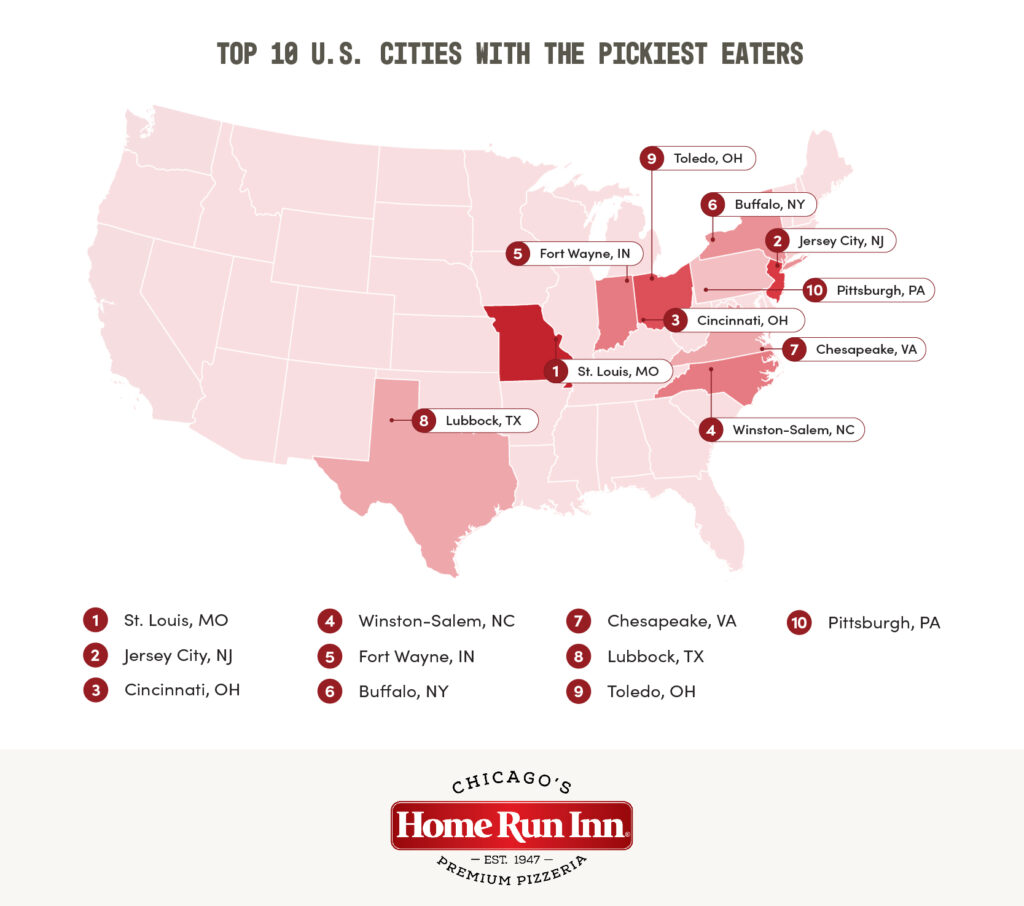
When it comes to food preferences, some U.S. cities have pickier eaters than others. If you’re from New York City, you likely have one of the most adventurous palates in the nation, according to our research. But if you live in St. Louis, Missouri, you’re living in the national capital of picky eaters.
The pickiest eaters don’t seem tied to any specific region; however, the West Coast appears to have less picky eaters than the rest of the United States. Elsewhere, two of the top 10 pickiest cities are located in Ohio (Cincinnati and Toledo). Jersey City, New Jersey, is the second pickiest in the nation, followed by Cincinnati, Ohio (3), Winston-Salem, North Carolina (4), and Fort Wayne, Indiana (5).
Despite their track record of adventurous sauce invention, Buffalo, New York, is home to the sixth pickiest eaters in the nation, followed by Chesapeake, Virginia (7), Lubbock, Texas (8), Toledo, Ohio (9), and Pittsburgh, Pennsylvania (10).
How many Americans are picky eaters?
According to our nationwide survey, picky eating is more common than most might think. Half of Americans say they consider themselves to be “picky eaters.” This label comes with some difficult feelings attached – nearly half (48%) of picky eaters say they get judged for their eating habits, one-third are embarrassed about their eating habits, and over a third (37%) become actively annoyed when people call them “picky eaters.”
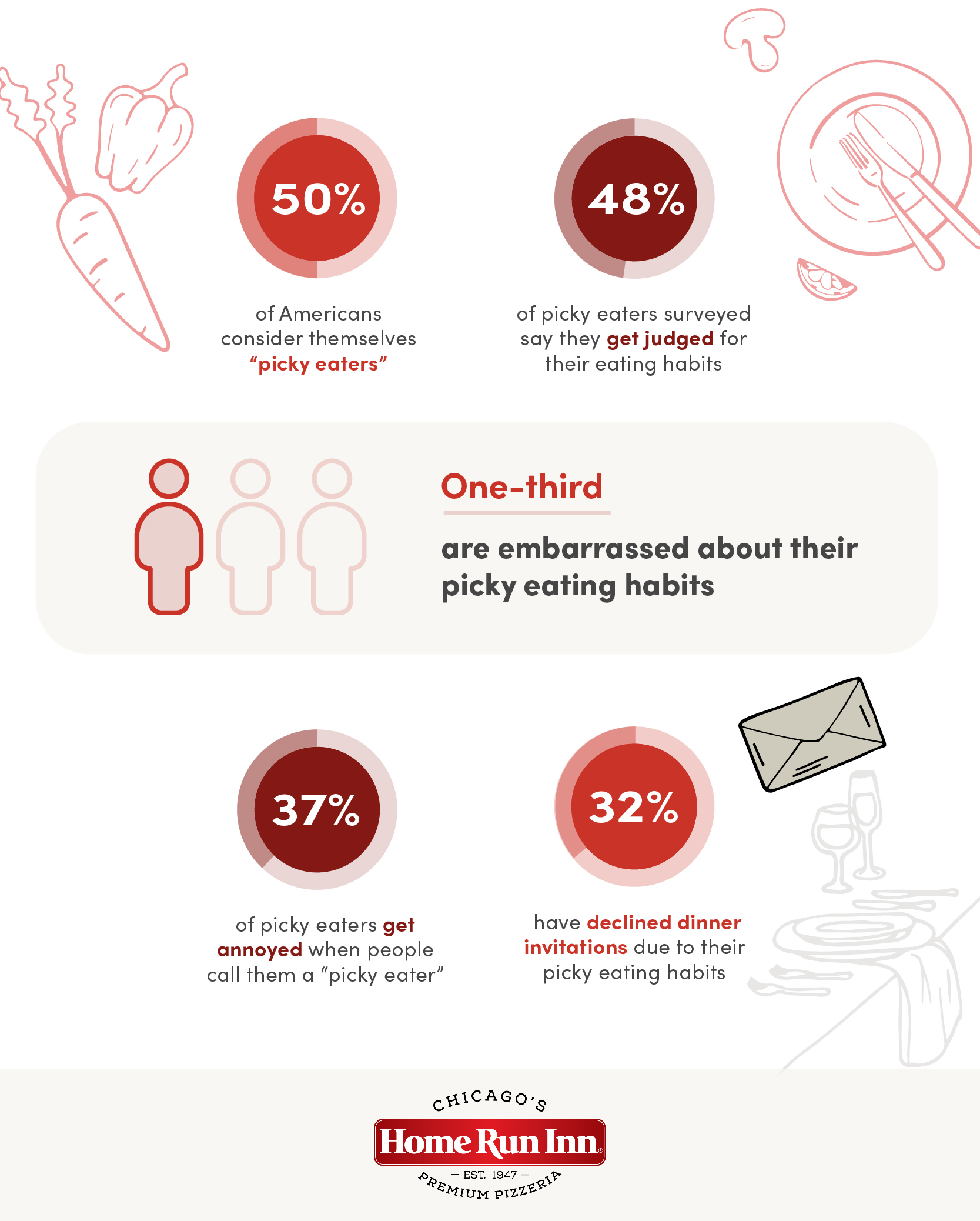
Picky eating can even cause people to change their behaviors – nearly one-third (32%) of picky eaters say they have declined dinner invitations due to their eating habits.
What types of foods do picky eaters dislike?
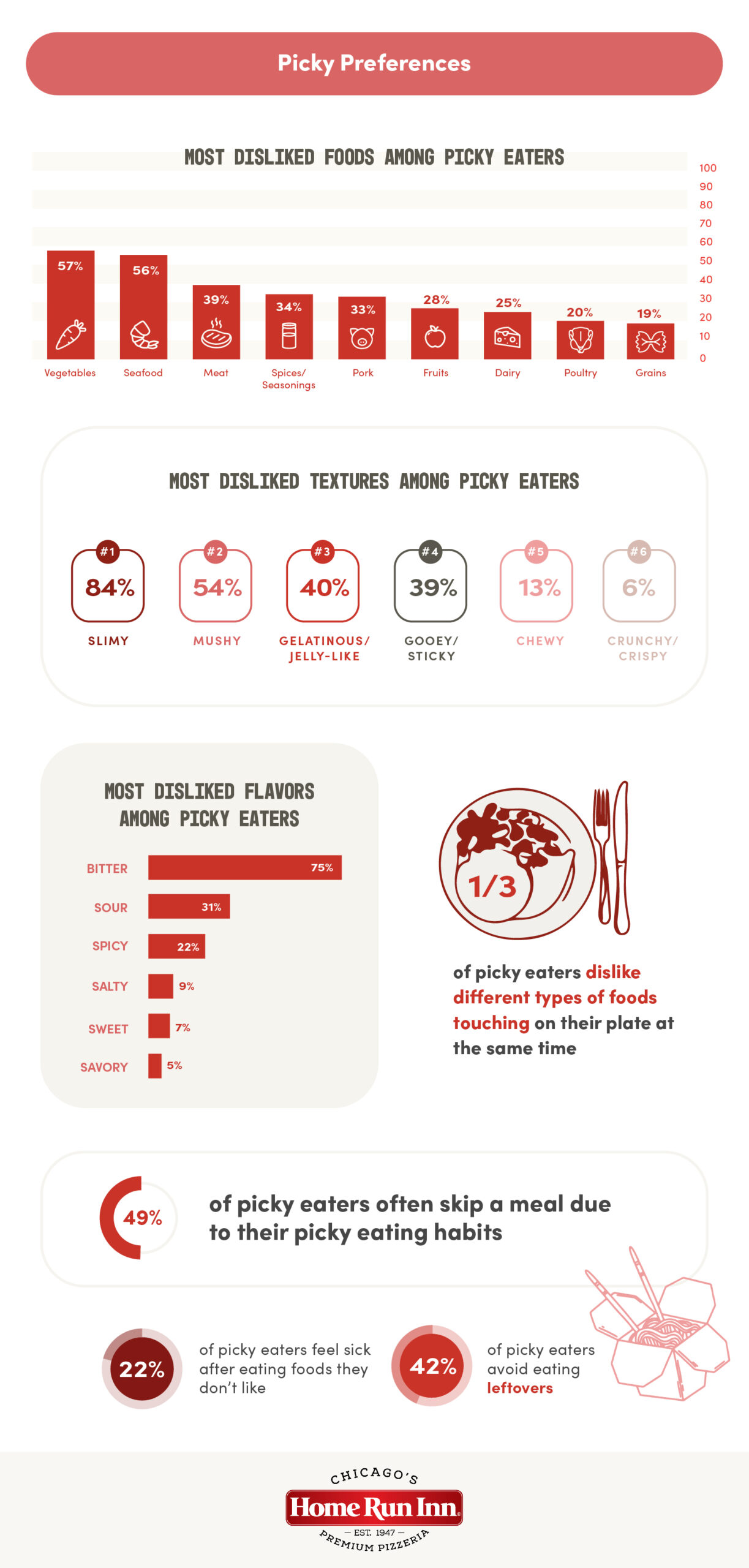
What foods are picky eaters most likely to avoid? Over half of picky eaters (57%) say they dislike vegetables the most, followed by seafood (56%), meat (39%), spices and seasonings (34%), and pork (33%).
Picky eaters also turn up their noses at foods that are featured heavily in most diets. Over one-quarter (28%) don’t like fruit, a quarter skip dairy, one in five (20%) aren’t keen on poultry, and 19% leave grains off their menu.
Textures also present problems for picky eaters. Over four in five respondents (84%) agreed that slimy foods are the most problematic, followed by anything mushy (54%), gelatinous or jelly-like (40%), or gooey and sticky (39%). Some even admit to having problems with chewy (13%) or crunchy (6%) foods.
Picky palates also shape meal preferences, with three-quarters of respondents saying they dislike bitter flavors. Bitter is the main offender by a healthy margin, while the next closest problem flavor is sour, which bothers 31% of picky eaters, followed by anything spicy (22%), salty (9%), sweet (7%), or savory (5%).
Sometimes it isn’t the food itself that is the problem, but rather how it is prepared and served.
Overall, 42% of picky eaters avoid eating leftovers, and one-third have a problem with different foods touching on their plate. This can lead to skipped meals in almost half of the picky eater population (49%), and can even cause some to feel sick (22% claim this can be a result of eating something they don’t like).
How to get a picky eater to try new foods
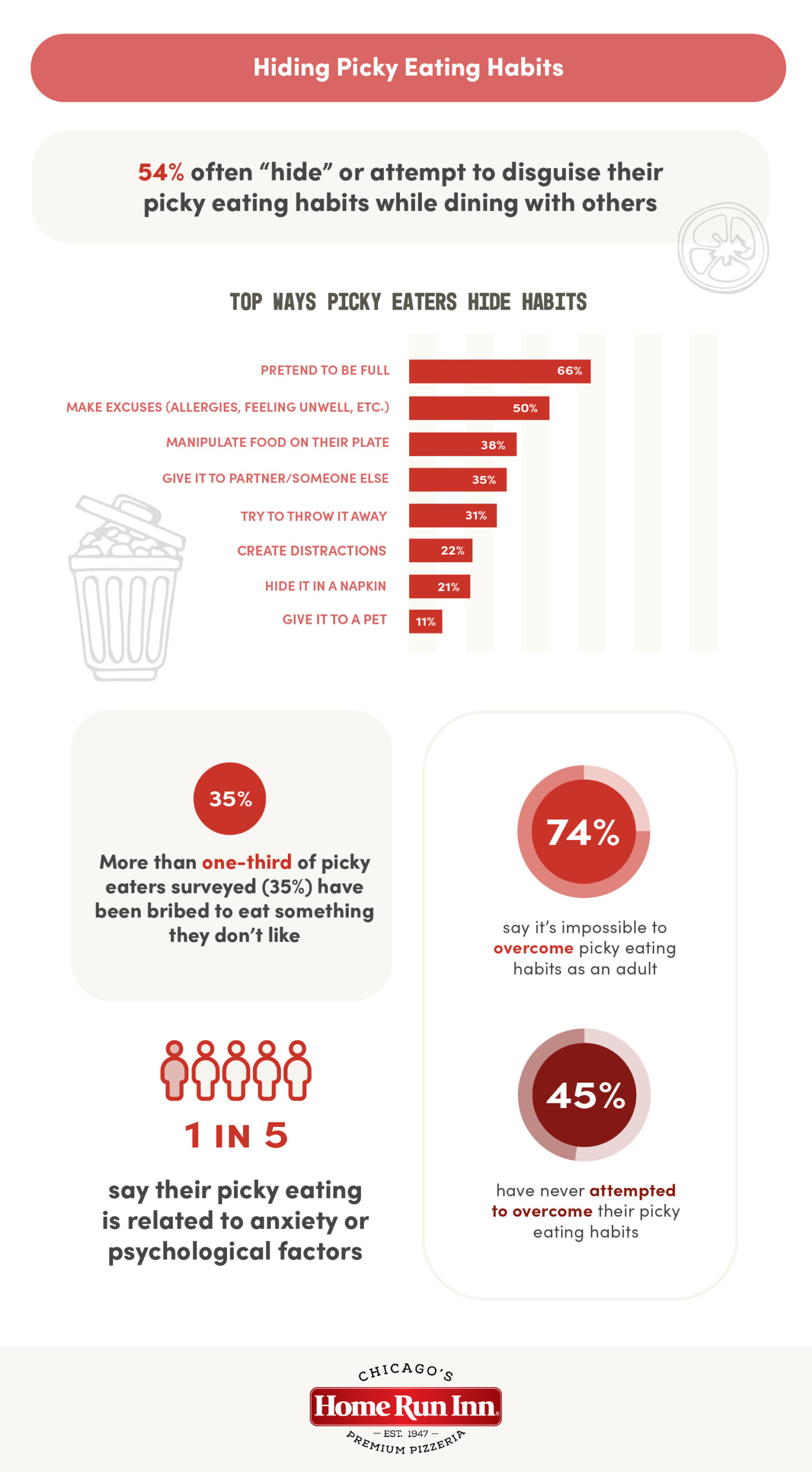
Changing our dislikes is easier said than done. Rather than alter their habits, many picky eaters mask their picky eating for fear of judgment. Over half of picky eaters (54%) admit they routinely hide their picky preferences while dining with others.
To do so, picky eaters use a variety of stealthy strategies. Among the most common, 66% pretend to be full, half make excuses (e.g., having allergies or feeling unwell), 38% manipulate the food on their plate, and 35% give it to their partner or someone else to eat.
Rather than conceal the problem, some picky eaters try to meet their limitations head-on. More than half of picky eaters (55%) say they have tried to overcome their picky eating habits, and over a third (35%) have been bribed to eat something they don’t like.
According to picky eaters, these interventions are unlikely to work. Nearly three-quarters (74%) say it’s impossible to overcome picky eating habits as an adult, and one in five say their picky eating is related to anxiety or psychological factors, suggesting the habits may be deeply embedded.
Do picky eaters like pizza?
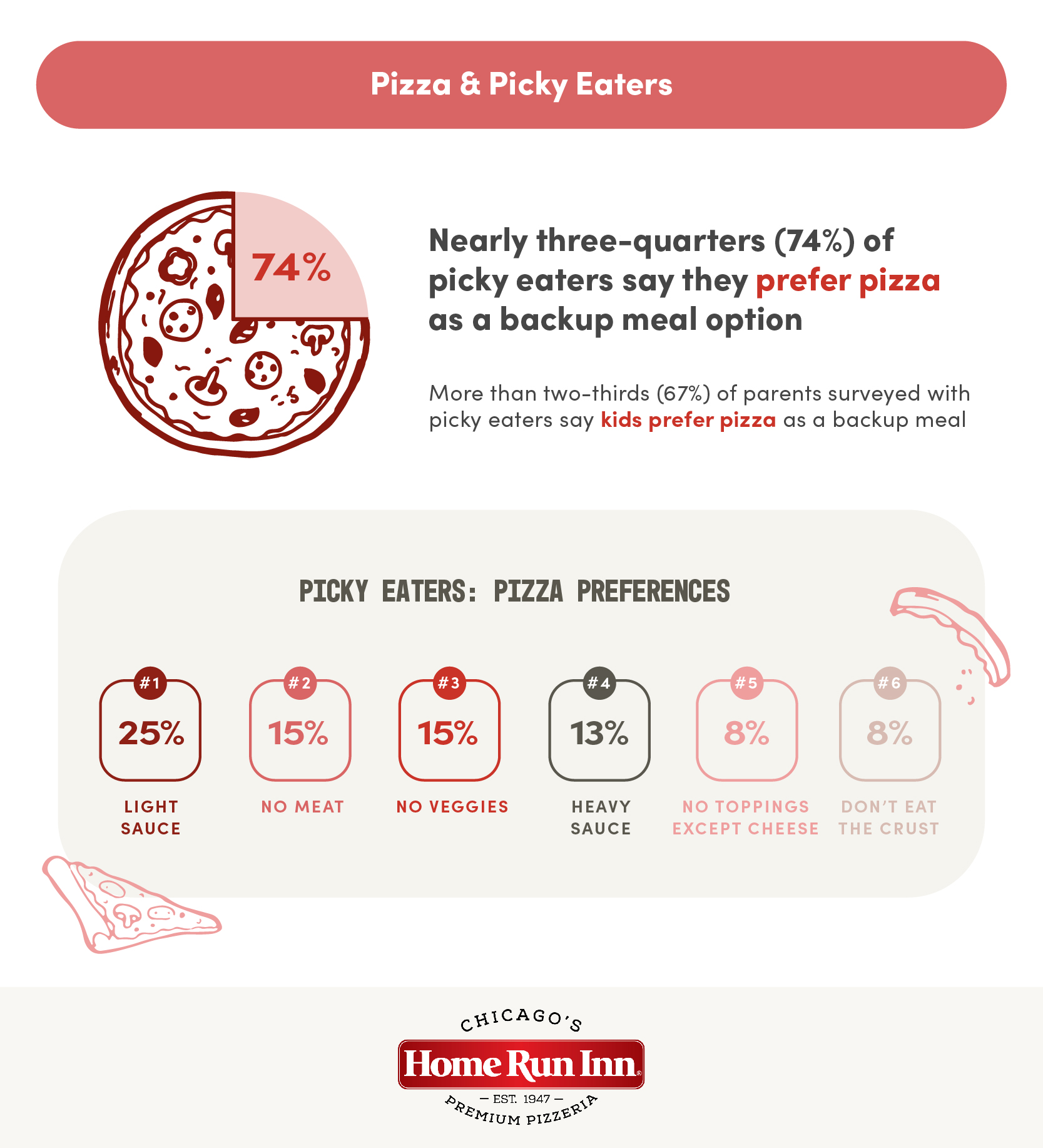
Where can a picky eater turn when the going gets tough? For a majority, pizza is the answer.
Nearly three-quarters (74%) of picky eaters say pizza is their preferred backup meal option. Similarly, more than two-thirds of parents (67%) with picky eaters say their kids prefer pizza as a backup meal.
Naturally, picky eaters do have preferences when it comes to pizza. One-quarter prefer light sauce, while 13% want heavy sauce. Additionally, 15% don’t want meat on their pizza, and 15% prefer to leave off the veggies.
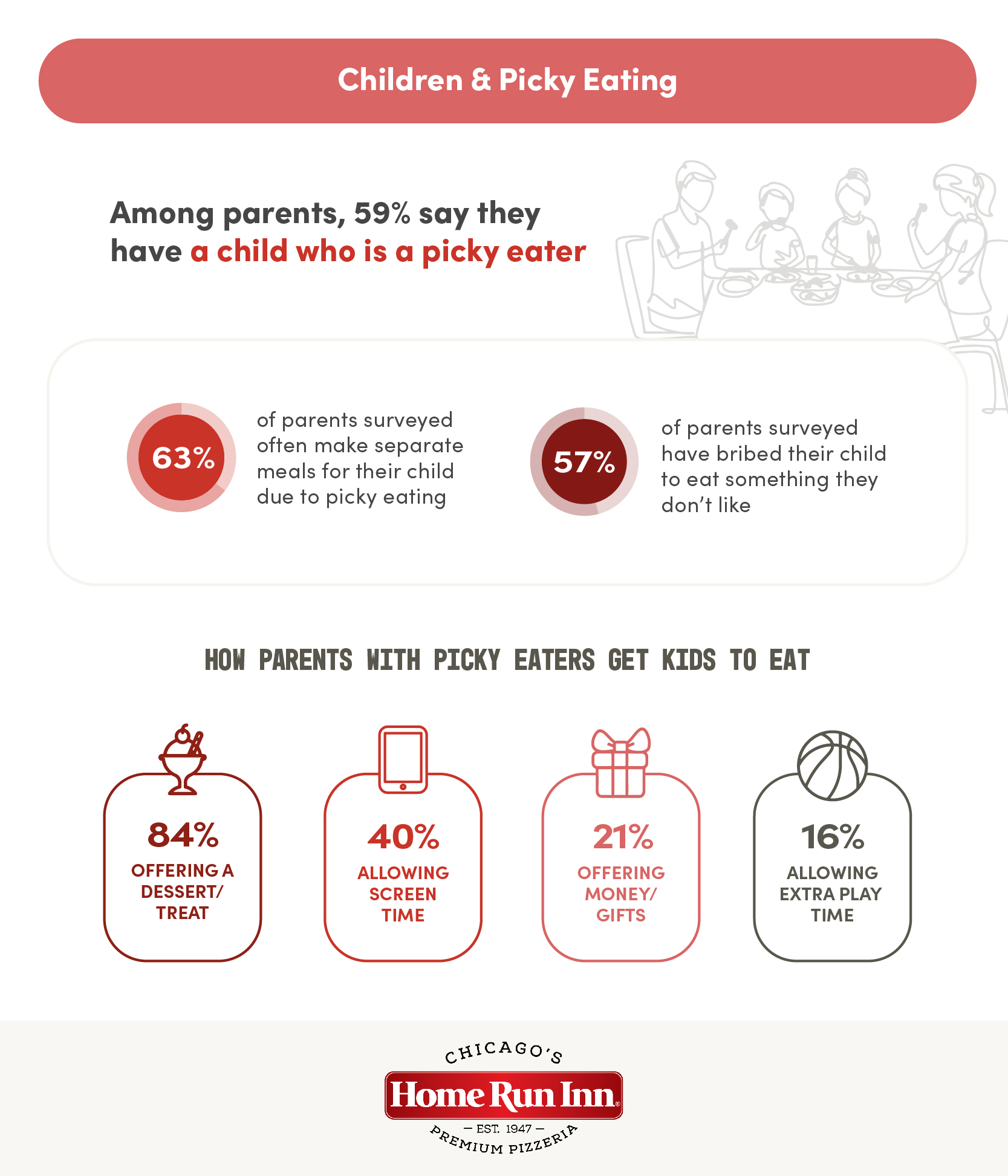
There’s a reason we assume kids are picky eaters – they usually are. More than half (59%) of parents say they have a child who is a picky eater, and 63% are pushed to make separate meals for their child due to picky eating.
Often met with resistance, over half of parents (57%) say they have bribed their child to eat something they don’t like, often by offering a dessert or treat (84%), allowing screen time (40%), offering money or a gift (21%), and allowing extra play time (16%).
According to most of our respondents (65%), their picky eating habits started in childhood. Only 14% say picky eating habits crept in during their teenage years, and 7% claim the onset of picky eating happened during adulthood. Elsewhere, 14% are unsure of when, exactly, they developed picky eating habits.
Picky eating can even influence who we end up dating, according to survey respondents. One in five of our respondents said they would not be open to dating a picky eater. But maybe picky eaters shouldn’t mind considering that four in five individuals would still be willing to overlook a picky palate.
Methodology
In May 2024, we conducted a nationwide survey of 2,010 respondents. Respondents were asked about their picky eating habits. Among respondents, 53% were female, 45% were male, and 2% were non-binary. The average age of respondents was 40. Income: Under $25,000 (18%); $25,000-$34,999 (11%); $35,000-$49,999 (13%); $50,000-$74,999 (21%); $75,000-$99,999 (14%); $100,000-$149,999 (13%), $150,000 or over (10%). Marital status: Married (37%), single (35%), in a relationship/not married (20%), divorced (6%), separated (1%), widowed (1%).
Total respondents: 2,010
Margin of error: +/- 3%
Country: United States (USA)
Region: All Regions
Gender: All Genders
Age of respondents: 18-82
We analyzed Google search volume for this analysis to determine search interest for picky eating habits. Our analysis included terms related to picky eating, meal ideas for picky eaters, and ways to overcome picky eating. Then, we analyzed those terms in all 50 states as well as cities with a population of at least 250,000 and calculated the average monthly searches per 100,000 in each state and city.
